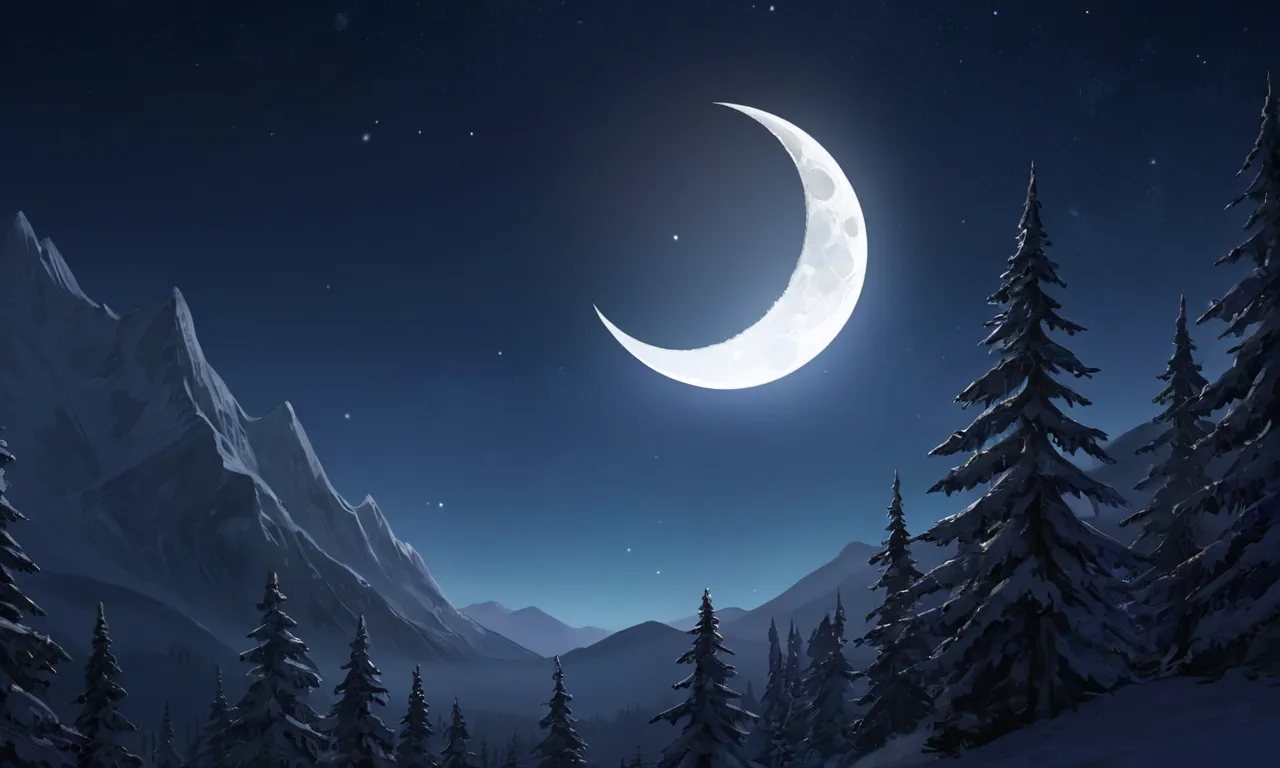Waxing Crescent Moon: Understanding Its Phases and Significance

The moon’s phases are a fascinating subject for many, as they not only provide us with an insight into astronomy but also hold deep cultural significance. One such phase is the waxing crescent moon, which occurs when the illuminated portion of the moon appears to be growing in size. In this article, we will delve deeper into understanding the waxing crescent moon, its phases, and its importance in various cultures and traditions.
Understanding The Waxing Crescent Moon Phase
The lunar cycle comprises eight major phases: new moon, waxing crescent, first quarter, waxing gibbous, full moon, waning gibbous, last quarter, and waning crescent. Each phase represents a different stage in the moon’s illumination as it orbits around Earth.
The waxing crescent moon is the second phase of the lunar cycle. It occurs when the moon is visible in the sky for a few hours after the new moon. During this phase, only a small portion (about 10-20%) of the moon’s surface is illuminated by the sun, and it appears as a thin crescent shape on the eastern horizon just before dawn or after dusk. As time progresses, the visible portion continues to grow until it reaches its maximum size at full moon.
Cultural Significance Of The Waxing Crescent Moon
Throughout history, different cultures have attributed various meanings and significance to the waxing crescent moon phase. Some of these cultural associations are:
Astrology: In astrology, the waxing crescent moon is associated with growth, expansion, and new beginnings. It symbolizes an increase in energy levels and enthusiasm for achieving goals. This phase is considered favorable for starting new projects or embarking on new ventures.
Chinese Lunar Calendar: In the Chinese lunar calendar, the waxing crescent moon represents a period of growth and expansion. It is believed that during this time, energy levels are high, making it an ideal period for planting seeds, initiating new projects, or embarking on adventures.
Native American Traditions: In many Native American tribes, the waxing crescent moon represents renewal and rebirth. The tribe members would perform rituals during this phase to ask for guidance and protection from the spirits of the night sky.
Ancient Egypt: For the ancient Egyptians, the waxing crescent moon was associated with the goddess Hathor, who represented love, fertility, and motherhood. They believed that this phase brought abundance and prosperity to their crops and livestock.
Practical Uses Of The Waxing Crescent Moon
The waxing crescent moon can also serve as a practical guide for various activities:
Gardening: This is an ideal time to plant seeds or transplant seedlings, as the energy and growth associated with the waxing crescent moon will help them flourish.
Fishing: Many fishermen believe that the waxing crescent moon phase is a good time for fishing, as it brings about an increase in fish activity due to higher tides caused by the gravitational pull of the moon.
Travel and Exploration: Ancient mariners used the waxing crescent moon as a navigational tool, as its visibility in the night sky helped them determine their position relative to land.
In conclusion, the waxing crescent moon is a fascinating phase in the lunar cycle with deep cultural significance and practical applications. Understanding its various aspects can provide us with insights into ancient traditions and beliefs while also guiding us in our modern-day pursuits of growth, renewal, and abundance. So, next time you see the waxing crescent moon in the sky, take a moment to appreciate its beauty and contemplate its meaning in your life.






